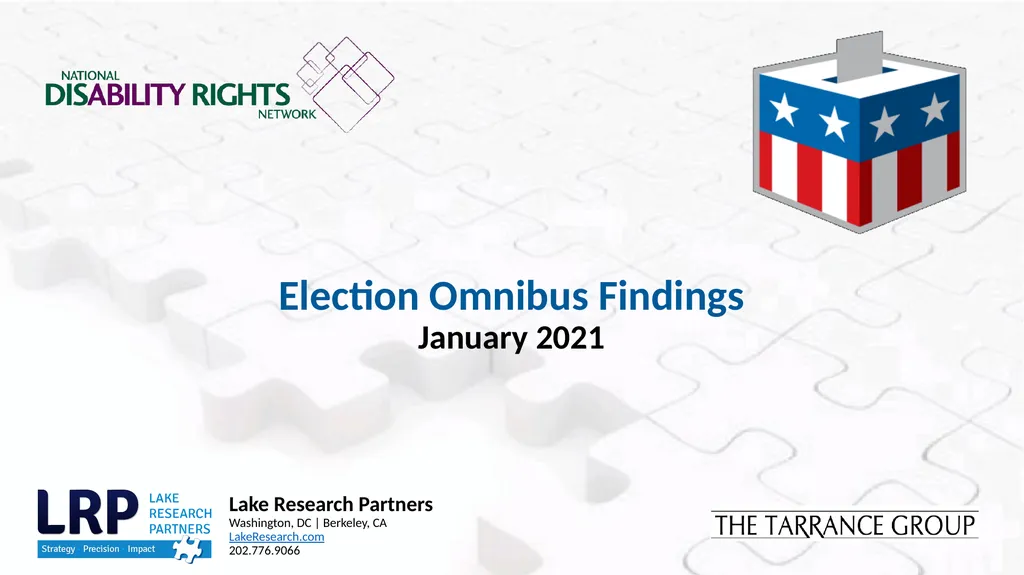Election Omnibus Findings January 2021 Methodology
Author : stefany-barnette | Published Date : 2025-11-07
Description: Election Omnibus Findings January 2021 Methodology Lake Research Partners and The Tarrance Group designed and administered this preelection and election night survey which was conducted using professional interviewers from October 31
Presentation Embed Code
Download Presentation
Download
Presentation The PPT/PDF document
"Election Omnibus Findings January 2021 Methodology" is the property of its rightful owner.
Permission is granted to download and print the materials on this website for personal, non-commercial use only,
and to display it on your personal computer provided you do not modify the materials and that you retain all
copyright notices contained in the materials. By downloading content from our website, you accept the terms of
this agreement.
Transcript:Election Omnibus Findings January 2021 Methodology:
Election Omnibus Findings January 2021 Methodology Lake Research Partners and The Tarrance Group designed and administered this pre-election and election night survey which was conducted using professional interviewers from October 31 – November 3, 2020. The questions about voting and the demographics reached a total of 2,400 voters nationwide who voted in the 2020 elections or who were planning to vote later on Tuesday – 1,335 interviews among voters who were reached on cell phones, including 600 interviews completed by text-to-online, and 1,065 interviews among voters who were reached on landlines (margin of error +/- 2.0%). Issue questions reached a total of 1,200 voters nationwide who voted in the 2020 elections or who were planning to vote later on Tuesday (margin of error of +/-2.8%). Telephone numbers were drawn from the TargetSmart voter file. The sample was stratified geographically based on the proportion of likely voters in each region. The data were weighted to reflect the aggregated Presidential vote as reported in the 2020 exit polls, as well as by gender, age, race, party identification, education, marital status, union household, and census region to reflect the actual proportions of the electorate. Due to rounding some of the numbers in the presentation will not always add to 100%. More than 2 in 5 voters report having a disability and/or having a family member or a close friend with a disability. Throughout this webinar deck, we use either the phrase “voters with disabilities/family/friends” or “P/F/F” to refer to the total sample of voters who say they either personally have a disability, have a family member with a disability, or a close friend with a disability. Do you, a family member, or a close friend have a disability, such as a physical, mental health, sensory, learning, cognitive or other disability that impacts daily living? If yes, then please let me know which applies. A majority of voters with disabilities overall, including 55% of voters with disabilities in battleground states, voted for Donald Trump. A majority of the voters with disabilities/family/friends voted for Biden – 51% to 48%. In 2016, a plurality of voters with disabilities (49%) voted for Clinton. If the election for President were held today, and the candidates were [ROTATE BIDEN AND TRUMP] _ Democrat Joe Biden _Republican Donald Trump, _Libertarian Jo Jorgensen, [AND] _Green Party Candidate Howie Hawkins, for whom would you vote? Voters with disabilities nationwide split their votes













